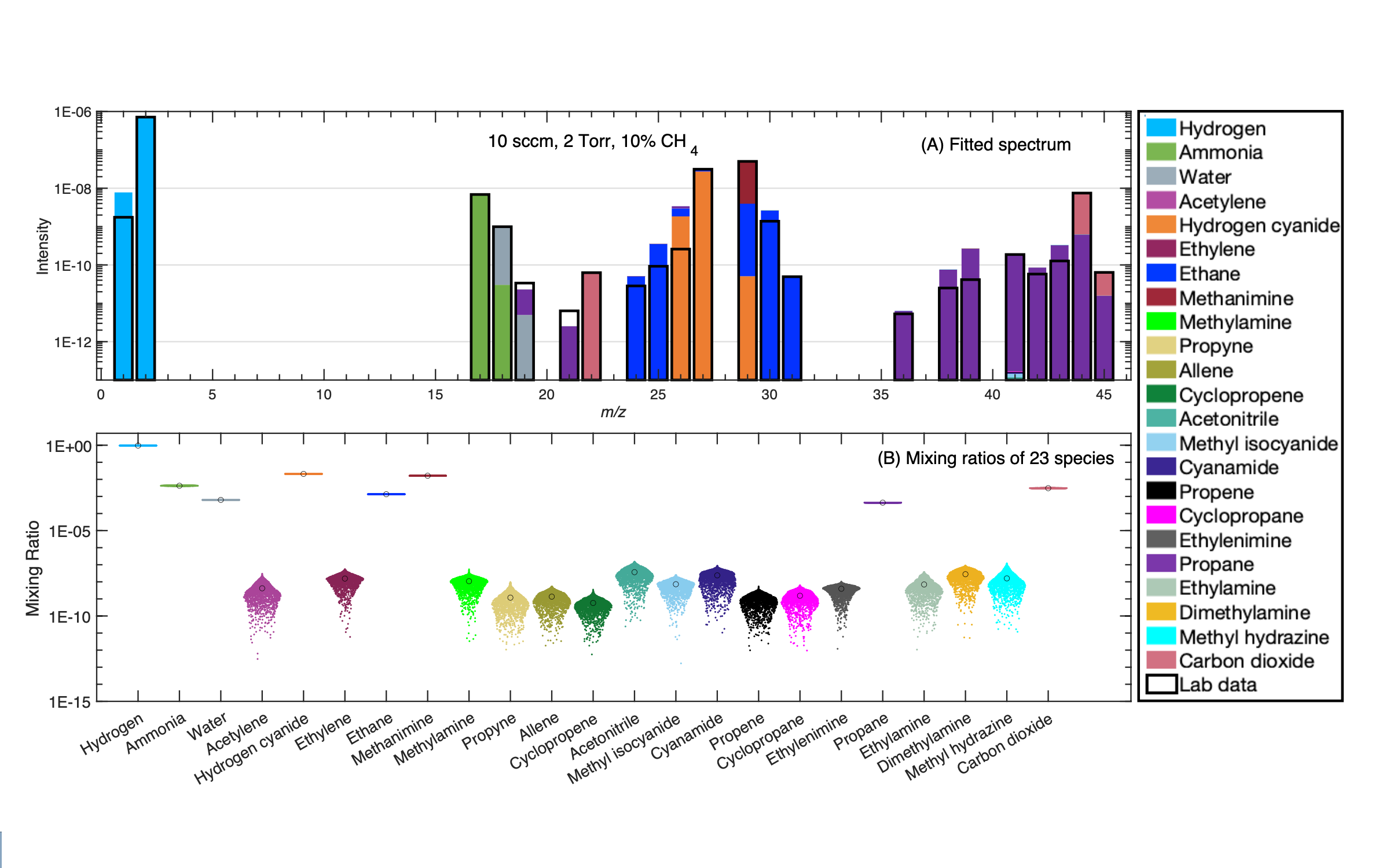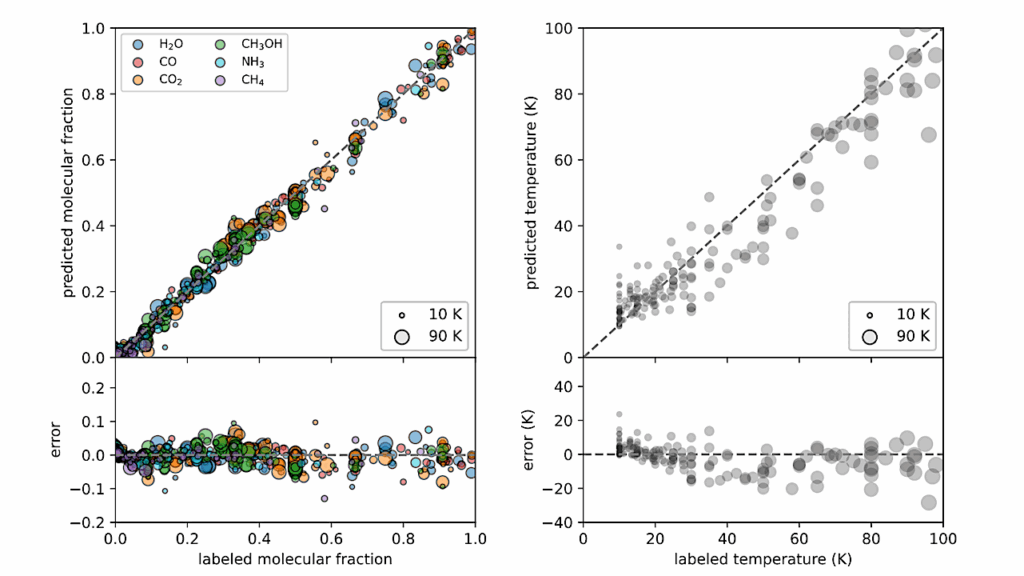Titan Atmospheric Chemistry Revealed by Low-temperature N2-CH4 Plasma Discharge Experiments

Chemistry in Titan’s N2-CH4 atmosphere produces complex organic aerosols. The chemical processes and the resulting organic compounds are still far from understood, although extensive observations, laboratory, and theoretical simulations have greatly improved physical and chemical constraints on Titan’s atmosphere.
Here, we conduct a series of Titan atmosphere simulation experiments with N2-CH4 gas mixtures and investigate the effect of initial CH4 ratio, pressure, and flow rate on the production rates and composition of the gas and solid products at a Titan relevant temperature (100 K) for the first time. We find that the production rate of the gas and solid products increases with increasing CH4 ratio. The nitrogen-containing species have much higher yield than hydrocarbons in the gas products, and the N-to-C ratio of the solid products appears to be the highest compared to previous plasma simulations with the same CH4 ratio.
The greater degree of nitrogen incorporation in the low temperature simulation experiments suggests temperature may play an important role in nitrogen incorporation in Titan’s cold atmosphere. We also find that H2 is the dominant gas product and serves as an indicator of the production rate of new organic molecules in the experiment, and that CH2NH may greatly contribute to the incorporation of both carbon and nitrogen into the solid particles. The pressure and flow rate affect the amount of time of the gas mixture exposed to the energy source and therefore impact the N2-CH4 chemistry initiated by the plasma discharge, emphasizing the influence of the energy flux in Titan atmospheric chemistry.
Chao He, Joseph Serigano, Sarah M. Horst, Michael Radke, Joshua A. Sebree
Comments: Accepted in ACS Earth and Space Chemistry, 6 figures
Subjects: Earth and Planetary Astrophysics (astro-ph.EP)
Cite as: arXiv:2209.11264 [astro-ph.EP] (or arXiv:2209.11264v1 [astro-ph.EP] for this version)
Submission history
From: Chao He
[v1] Thu, 22 Sep 2022 18:21:55 UTC (10,823 KB)
https://arxiv.org/abs/2209.11264
Astrobiology








